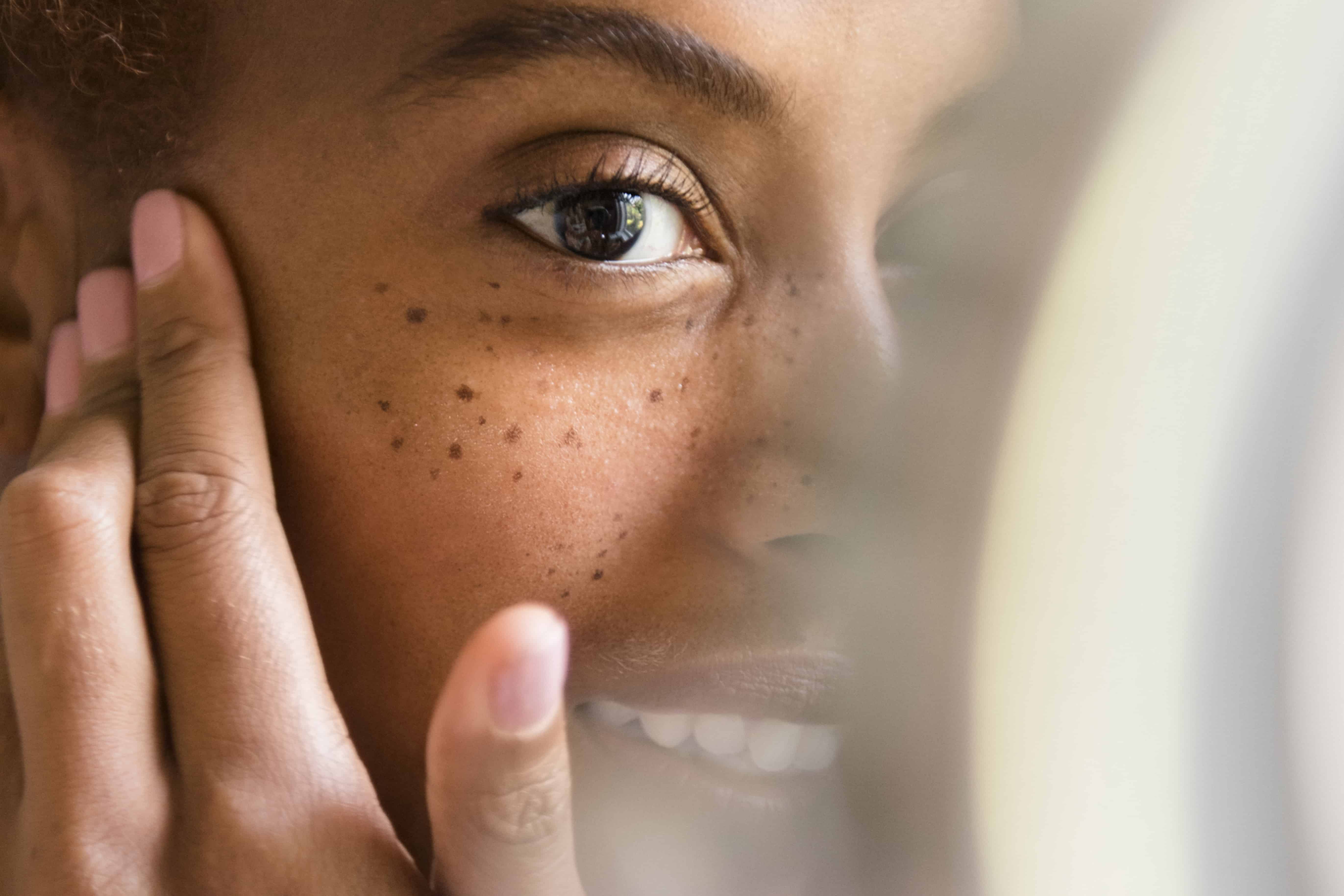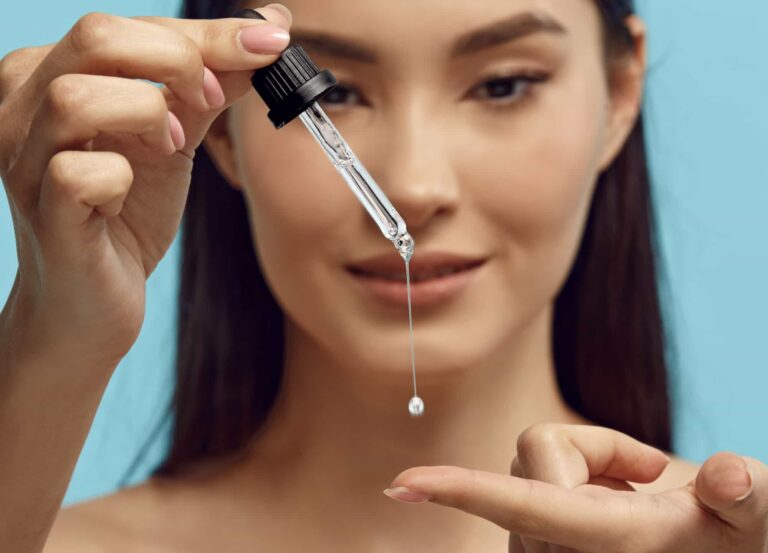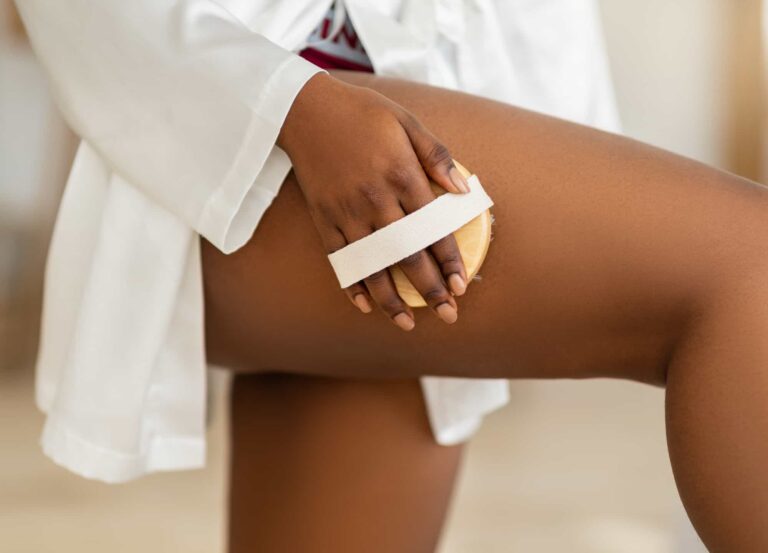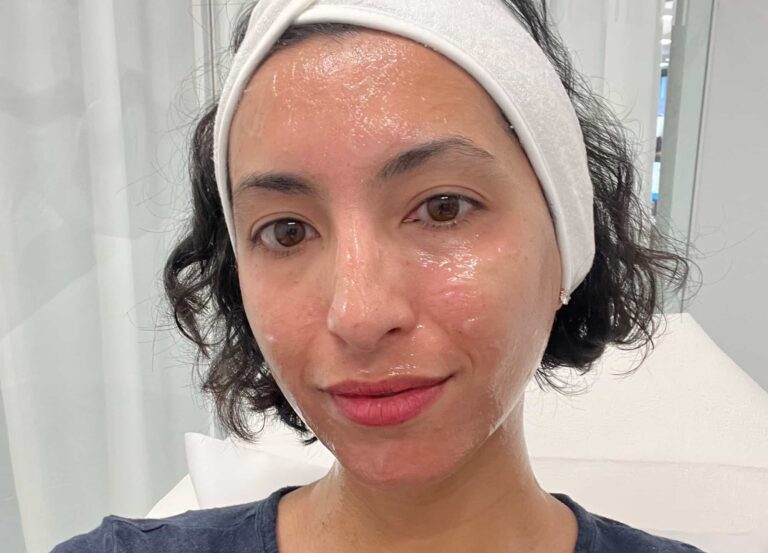It’s normal to get nervous before trying a new aesthetic treatment. You wonder whether it’ll be worth the expense, if the pain will be manageable, how long you’ll have to keep your Zoom camera turned off as you recover… but one thing those with light skin never have to consider is whether their provider has experience treating skin like theirs. Black women don’t have that luxury, and they put themselves at much higher risk of burning, scarring, and hyperpigmentation when they sit in the dermatologist’s chair. Bad experiences with providers who never got the necessary training in treating melanated skin, understandably, keep many women from going back—but in skilled hands, the majority of popular cosmetic procedures are safe and effective for all skin tones.
We asked four Black dermatologists to set the record straight on the most common myths and misconceptions around aesthetic treatments for dark skin.
Misconception: All dermatologists learn how to treat Black skin in medical school
Reality: Any training and experience that derms receive in treating Black skin happens during residency—and is dependent on how diverse the surrounding city’s population is. Dr. Peterson Pierre, a board-certified dermatologist in Thousand Oaks, California, says that medical school offers no curriculum around Black skin and most derms don’t have the knowledge or tools required to successfully treat dark tones. He believes that “25% of all dermatology lectures in med school should be dedicated to skin of color, and skin of color should be woven into dermatology residency training programs.”
That doesn’t always happen, explains Dr. Michelle Henry, a board-certified dermatologist in New York City, because “it’s geographic—you learn on what you see. If you’re in a big city, you’ll encounter more patients of color who walk into the office, but it’s a lot harder if you’re in a place without a diverse population.” Dr. Henry says that because she had a particular interest in treating herself and her friends and family, she carved out opportunities—and she’s hopeful that things are improving. “A lot of dermatologists who don’t focus on skin of color are really hungry for that training, so they’ll come and shadow me or other doctors to get that information. I think that’s an area that’s growing, but for many reasons, a lot of programs aren’t as well-versed in the aesthetics as they are in the medical.”
One solution, says Dr. Katina Miles, a board-certified dermatologist in Gambrills, Maryland, is to supplement better education with away rotations in more diverse cities so that residents can gain the needed experience and go on to careers where they feel comfortable treating any patient who walks in their door.
“Most dermatologists understand that treating skin of color is more high-risk, so don’t shy away from asking about their training,” says Dr. Henry. “In order to be a smart consumer, it is smarter to not make assumptions, so ask them, ‘Have you done this? How many cases? What are the risks and benefits? Do you feel comfortable treating my skin?’”
Misconception: Lasers aren’t safe for Black skin
Reality: While it was once the case that lasers were recommended only for light skin tones (the logic being that the more unsophisticated lasers at the time wouldn’t be able to differentiate from natural pigment versus dark spots, melasma, and hair follicles), technology has come a long way—today, there are plenty of lasers that effectively remove hair, treat skin aging and acne, and won’t cause hyperpigmentation on dark skin.
Dr. Henry explains that while we all have the same number of melanocytes, the melanosomes that hold the melanin are bigger in skin of color. “Any insult to the skin will cause them to leak melanin, which is why you see women of color say, ‘Oh, I have an acne cyst that turned into a dark spot.’” With laser treatments, she says, “it’s all about quieting the melanin and the enzyme processes that make pigment, which can be done by pretreating with hydroquinone for a few weeks before the procedure and after or using a steroid after.”
She, along with the other derms interviewed, agree that the long-pulsed 1064 Nd:YAG laser—utilized in Laser Genesis and the Aerolase Neo Laser—is the safest and most effective on the market for targeting a wide range of issues on dark skin, from hair removal to scarring to skin laxity. “The laser beam goes deep enough to bypass epidermal melanin and fast enough not to cause a buildup of heat but still reaches the target so that you can get improvement.”
Fractional lasers, such as Fraxel, can be used for marks, texture, and tone issues, but only if a laser expert is operating the device, says Dr. DiAnne Davis, a board-certified dermatologist in Houston. “Fraxel comes with two different wavelengths. It seems to be safe [at] 1927, and you can still use the 1550 nanometer wavelength in skin of color, but the depth, the number of passes, and the density are all going to be extremely different. Most dermatologists would agree that Fraxel is entirely dependent on what it is you’re trying to treat and how much experience you have treating it in skin of color,” she says.
Ablative resurfacing lasers, which remove the top layer of skin, have a high risk of hyperpigmentation and should not be used on Black skin.
Related: Your Guide to Safe and Effective Hair Removal Lasers for Fair, Medium, and Deep Skin Tones
Misconception: Tattoo removal doesn’t work on Black skin
Reality: “Tattoo removal on dark skin is complex and absolutely not something you want to do with someone who hasn’t done many, many cases, but it is possible, and you can get a significant reduction of the tattoo,” says Dr. Henry. The challenge is that melanin absorbs heat energy—a lot of which is needed to break down stubborn, deep ink—and if the technician isn’t an expert in tattoo removal, they run the risk of holding the laser on the treatment area for too long and burning the skin. PicoWay, a tri-wavelength laser that uses photoacoustic energy rather than thermal energy to shatter the ink pigments into smaller fragments, is a preferred method for dark skin.
Misconception: Black women don’t get injectables
Reality: “In the past, there was a lot of stigma against cosmetic procedures for women of color,” says Dr. Henry. “People always say ‘Black don’t crack’ or ‘Asian don’t raisin,’ but we all still age, we just age differently.” Now that injectables are less taboo, more and more Black women are coming in treatment—it just tends to be for filler rather than Botox.
“Caucasian women are wrinklers and shrinkers, whereas dark-skinned women are sinkers and saggers. They may not photo-age as readily, but they lose volume. You see aging around the eyes and midface flatness more readily than you’ll ever see wrinkling on the skin—and so with women of color, I’m doing a lot of tear trough filler. Caucasian women, however, are more interested in Botox,” she says.
Misconception: Chemical peels are off-limits for Black skin
Reality: The risk of burning, scarring, and hyperpigmentation scares many Black women away from chemical peels, but Dr. Miles says that superficial and medium peels are perfectly safe for skin of color when administered by a trained professional. “To avoid a burn, stop using retinoids, retinol, or scrubs one week prior to treatment,” she says. Superficial and medium-strength peels typically use lactic, salicylic, and/or glycolic acid, whereas deep peels—which should not be done on dark skin—are phenol-based and often require anesthesia and sedation.
Misconception: Microneedling punctures will lead to scarring and darkening of Black skin
Reality: “Black skin is especially sensitive to irritation and inflammation, which can easily lead to post-inflammatory hyperpigmentation [PIH],” says Dr. Pierre, so it makes sense that Black women would be wary of any cosmetic treatment that uses needles to create thousands of micro injuries on the skin. But Dr. Henry assures that microneedling is safe and effective at treating acne scars, hyperpigmentation, and uneven texture in dark skin—especially when combined with radiofrequency.
“Microneedling radiofrequency devices are colorblind, so I can really mess with the energy. A lot of other lasers are able to be done safely, but only at such low energies that you barely get any benefits. With radiofrequency, you get remarkable results. Then I use needles that are insulated toward the top so they bypass the epidermal melanin, which is what causes all the problems,” she says.
Misconception: Hair loss treatments are one-size-fits-all
Reality: Hair loss is one of the biggest issues Black patients seek treatment for, but many dermatologists don’t have enough of an understanding of Black hair to successfully treat it. Whereas white women tend to have androgenetic alopecia (gradual thinning at the part, followed by thinning from the top of the head), Black women commonly have traction alopecia (receding at the forehead, temples, and nape caused by years of tightly pulled styles).
“If I were seeing a Caucasian patient, I would tell them, ‘You’re going to use this shampoo every day, or maybe every other day.’ But I could not tell an African American that, because we don’t wash our hair every day or every other day. Or even every week sometimes,” says Dr. Davis. “That then makes it hard for the patient to follow the treatment guidelines or the plan that’s recommended for them because they’re like, This person doesn’t understand how I naturally style my hair, how I wash it, and my lifestyle.”
Dr. Henry says she has patients who come to her for hair loss help after having been made to feel ashamed about their hair-care routine by another doctor. “The fact that most women of color do not wash their hair every day isn’t a hygiene thing—it’s that if they did, their hair would be broken and damaged and would just snap off, because the hair is significantly drier. Patients will come to me with hurt feelings because someone has made them feel unclean after they said, ‘I wash my hair once a week.’ That’s a big cultural issue.”
Before signing on to any procedure, Dr. Davis recommends first doing a scalp biopsy, to diagnose whether you have scarring or nonscarring hair loss. “Once you have an accurate diagnosis, you can find the best treatment. Often, the type of hair loss is misdiagnosed in Black women,” she says.











